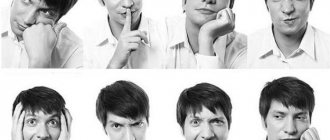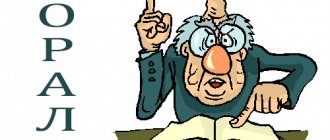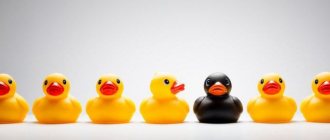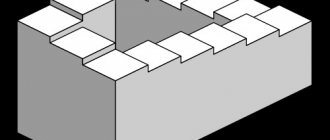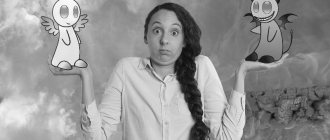- November 29, 2018
- Psychological terms
- Olgerd Semenov
What is behavior? The answer to this question is not as simple as it might seem at first glance. Behavior is the response of a system or organism to various stimuli or actions. Whether they are internal or external, conscious or subconscious, open or hidden, and voluntary or involuntary.
Understanding behavior computer science perspective, it consists of actions, operations, interactions with surrounding beings and environment and its properties. Behavior can be represented as a vector of existence. The rules of behavior are what this very vector determines.
Biological context
Biology is very closely related to the issue described in this article. Social behavior is not something that is unique to humans. It arose as a result of long-term natural selection. Although there is some disagreement about how to precisely define behavior in a biological context, one general interpretation, based on a meta-analysis of the scientific literature, states that “behavior is the internally coordinated responses (actions or inactions) of entire living organisms (individuals or groups) to internal and/or external incentives.”
A broader definition of behavior, applicable to plants and other organisms, is similar to the concept of phenotypic plasticity. It describes it as a response to an event or environmental change during a person's life that is different from other physiological or biochemical changes and occurs more quickly. At the same time, it excludes changes that are the result of development (ontogenesis). Behavior may be innate or learned from the environment. The principle of a behavior is whether it is dependent on the environment or is externally learned. That is, it is influenced by both the environment and the environment of other creatures and the will of the subject himself.
What is behavior? It can be considered as any action of the organism that changes its relationship to the environment. It provides access beyond the body into the environment.
Behavior is shaped by interactions with others
Charles Darwin once said that man is a social creature. You can see this in his aversion to being alone, as well as his desire for company outside the family.
Giphy
However, this is not just a desire of the company, but an obvious need for people to need social contacts for spiritual and psychological development. Apart from psychological definitions, social behavior is nothing more than the ability to behave or manners:
- How does a person relate to other people?
- Is he considerate or selfishly moving forward?
- Does he learn information quickly as a newbie or slowly?
- Does he know how to ask for help?
As long as none of this escalates to extremes, everything is fine - sometimes being a little introverted, sometimes thinking about yourself first is completely normal.
Good social behavior is characterized by a person offering to help a colleague, for example, if he notices that he is very tired at work. Or even offer to take on an extra shift if a colleague needs to go home early.
Photo by Yan Krukov: Pexels
Willingness to help, and therefore good social behavior, occurs when the strong help and protect weaker people. Of course, this does not mean that everyone should use their resources for the benefit of others and be there for others while denying themselves. It's more about being responsible and treating others with respect and kindness.
Ecology
Behavioral ecology is the study of the evolutionary basis of animal behavior due to environmental pressures. Behavioral ecology arose from ethology after Niko Tinbergen outlined four questions that should be considered in the study of animal behavior, among which are proximate causes, ontogeny, survival, and phylogeny.
If an organism has a trait that provides a selective advantage (that is, has adaptive value) in its environment, then natural selection will favor it. Adaptive meaning refers to the expression of a trait that affects fertility, as measured by an individual's reproductive success. Adaptive traits are those that produce more copies of a person's genes in future generations. Maladaptive traits are those that cause you to produce less. For example, if a bird that can sing louder attracts more mates, and singing loudly is an adaptive trait for that species because a louder bird is more common than less loud birds, thereby passing the louder genes into future generations.
History and followers of the doctrine
Psychology, as a science of behavior, arose hundreds of years ago. Ancient researchers began to talk about it. A separate branch of psychological science that began to study behavior is behaviorism. This is a science whose goal is to study the behavioral characteristics of animals and people. His followers are confident that behavior is based on reflexes.
The main followers of behaviorism:
- B. F. Skinner;
- John Watson;
- Fred Keller;
- Sydney Bijou.
- Vladimir Bekhterev;
- Clark Hull;
- Donald Bayer;
- Neil Miller;
- Jacques Fresco;
- Edward Thorndike.
The main drawback of behaviorism is that its followers did not recognize higher emotions, the influence of the unconscious area on changing reactions to various stimuli.
The Science of Survival
Individuals always compete with other individuals for limited resources, including food, territory, and mates. Conflict occurs between predators and prey, between rivals and comrades, between siblings, partners, and even between parents and offspring. Roles of behavior are a special niche that the subject occupies in this permanent conflict with everyone.
The meaning of social behavior depends in part on the animal's neighbors. Behavior is something that is often consistent with surrounding members of the same species. For example, the more likely a rival male is to abandon a threat, the more value the second male gains from the threat he supposedly poses. However, to protect the group, males can also act as a team. When a population exhibits a series of interacting social behaviors such as this, it can develop a stable pattern known as an evolutionarily stable strategy (or ESS). This term, derived from economic game theory, became prominent after John Maynard Smith (1982) recognized the possible application of the concept of Nash equilibrium to model the evolution of behavioral strategies.
Behavioral instinct
Innate (instinctive) behavior refers to actions that are almost impossible to undo. This is a close set of mental and physiological processes. For example, predators, feeling hungry, use a range of behaviors to obtain food.
Innate forms of behavior (instincts) are genetically inherent types of behavior that work flawlessly. These are the reflexes we need to survive, our animal “I”. The formation of marriages, the birth of offspring, obtaining food, etc. This is the form of human behavior that is innate.
Unconditioned instincts, or, as they are also called, reflexes (from the Latin reflexus - reflected), regulate the lower parts of the central nervous system and the spinal cord. They ensure the survival of the species and are very useful in many ways, because they do not need to learn. They were laid down genetically during the evolution of mankind. For example, withdrawing your hand from the fire when burned is a reflex that does not require time to think. However, scientists have recently discovered neural connections that allow us to control instinctive behavior.
The term “unconditioned reflex” was introduced by I. P. Pavlov to designate instinctive behavior that occurs when certain stimuli act on receptors. For example, salivation when food enters the mouth. The set of reflexes is the same among individuals of the same species. Thus, the wolf hunts when it needs food, and some species of dragonflies protect themselves by secreting a caustic liquid from their glands that corrodes the skin.
Human society
Human behavior is the responses of people or groups of people to internal and external stimuli. It refers to the array of every physical action and observable emotion associated with people. And also with humanity. Although specific personality and temperament traits may be more consistent, other behaviors will change as a person moves from birth to adulthood. In addition to patterns dictated by age and genetics, behavior is something that is driven, in part, by thoughts and feelings. This is an understanding of the individual psyche, identifying relationships and values among other things. Social behavior is a subset of human behavior that examines the significant mutual influence of social interaction and culture. Additional influences include ethics, environment, authority, rapport, hypnosis, persuasion, and coercion. Moral behavior is that which is consistent with social ethics and morality.
Humanistic psychology
At the center of the humanistic approach is the internal freedom inherent in man and his desire to realize himself. He is born alone, his most basic needs not met. But he grows physically and spiritually.
Feeling safe, fed, watered, he begins to reach out to communicate with people and experiences deep feelings for them. With age, he realizes the meaning of self-realization and creating something unique, which allows him to satisfy internal motivation and do something useful for people.
But it happens the other way around. Even in a situation of frustration of the need for safety, food, sleep, a person does not lose himself and the meaning of life, he strives to realize himself as a free, creative person. Remember V. Frankl - in the conditions of a concentration camp he managed to remain a thinking, helping person. However, in this situation it can be assumed that the conscious struggle for life, the search for its meaning is connected with the fact that one day his most urgent needs were satisfied.
Psychological theories explain human behavior from a variety of perspectives. For some, it is the result of incentives. For others, it is an attempt to hide the unacceptable by using means of defense. Humanists make a person open to himself and give him the freedom to understand who he is.
Social norms
The behavior of people (and other organisms, or even machines) falls within a range, some of which are common and some of which are unusual. That is, some types of behavior are acceptable forms of behavior, and some are unacceptable. In sociology, it generally includes actions that have no meaning, are not directed at other people, and therefore all basic human actions. Behavior in this general sense should not be confused with social behavior, which is more advanced social action specifically directed towards other people. Acceptability of behavior depends largely on social norms. And it is regulated by various means of social control. Human behavior is studied by the specialized academic disciplines of psychiatry, psychology, political science, sociology, economics and anthropology. Standards of behavior are what must be observed when living in society.
A person's behavior is felt throughout his life. It involves acting on various factors such as genetics, social norms, religious belief and relationships. Behavior is influenced by certain traits inherent in each person. The characteristics vary from person to person and can produce different actions or behaviors depending on each individual. Social norms also influence behavior. Due to the inherent conformist nature of human society as a whole, people are pressured to adhere to certain rules and to follow rules for exhibiting certain behaviors in society. Which determines the interaction of people. Different types of behavior are considered acceptable or unacceptable in different societies and cultures. The core belief can be perceived through that person's religion and philosophy. It shapes the way a person thinks. And this, in turn, leads to different behavior among people. Attitude can be defined as "the degree to which a person has a favorable or unfavorable evaluation of the behavior in question." A person's attitude is basically a reflection of the behavior he or she will portray in specific situations. Thus, human behavior is greatly influenced by the habits we use on a daily basis. Deviant behavior is something that receives a negative assessment from society.
Our misconceptions
We believe that our assessments and our very behavior come from ourselves. Only the principles of our assessments, actions and phenomena are external.
Let's take an example, the calculator performs complex mathematical calculations on its own, but in order to get the result of the calculations, we performed some manipulations with it. So it is with us, information from the surrounding world enters into us, and we try to calculate our attitude to this modern world and create our own behavior.
No one wants to waste their energy on actions that will not be appreciated by at least one person. No, a person can try to do something, but if he does not find the support of at least one person, then all efforts will stop. We work if this work is appreciated, and we do not work if we do not find the support of others.
Our curiosity would also have no meaning if its results were not communicated to someone else. We train in the hope that it will provide an opportunity to make an impression. The motives of an individual's actions are regulated by acquired social norms and the environment of his upbringing.
The influence of genetics
Long before Charles Darwin published On the Origin of Species in 1858, animal breeders knew that behavioral patterns were somehow influenced by inheritance from parents. Studies of identical twins compared with less closely related individuals and children raised in foster care have helped scientists understand the influence of genetics on human behavior. The study of human behavioral genetics is still evolving steadily using new techniques such as genome-wide association studies.
Hierarchy of equality
Animal families exhibit varying degrees of hierarchy. The individual is looking for a specific reaction among its fellows in order to become a leader.
If it were not possible to achieve emotions of recognition from family members, then the individual would not bother. It turns out that if an individual seeks the attention of others, then it tries by any means to become a leader, that is, it achieves its goals through bellicose behavior.
People's behavior is almost the same - as soon as those around them provide their emotions with recognition, one of the members of society becomes a leader. For example, emotions of recognition go to authoritative people who have somehow attracted the attention of society. People brought up in a strict home hierarchy display aggressive behavior towards members of their family or towards weaker people.
Role of the group
Social norms, often the unspoken rules of a group, shape not only our behavior but also our relationships. An individual's behavior varies depending on the group of which he is a part, as well as the characteristics of the society that allow its norms to greatly influence society. Without social norms, human society will not function, as is evident in some countries today. People would have to be more abstract in their behavior as there would be no pre-tested "normal" standardized way of life and people would be able to make many more choices for their own personal good. However, the institutionalization of norms is inherent in human society. Perhaps as a direct result of the desire to be accepted by others, which causes people to manipulate their behavior in order to “fit in” with others. Depending on their nature, norms can impact different segments of society either positively (e.g., eating, dressing warmly in winter) or negatively (e.g., racism, drug use).
Hierarchy of differences
What distinguishes people from animals is that they can gain recognition in a variety of ways. A person can achieve emotional support, that is, the respect of others, by demonstrating his talents. This develops self-esteem in an individual, since it is impossible without the recognition of the society that surrounds them.
It is on these principles that modern society lives. All that remains to be added is that a person who achieves emotional recognition from society begins to own the opinion of this society, and therefore becomes an authority who can subsequently influence the behavior of society as a whole.
People look for any opportunity to gain respect, and if they fail to gain recognition for their own abilities, then any means are used to achieve the goal.
Some try to gain respect in their religion or nationality, while others demonstrate the level of their cars and clothing brands or socially unacceptable behavior.
These things say nothing about the mental level of their owners, although they make an impression on many members of society. There are people who conquer mountains or throw themselves into abysses, bask on beaches or go on trips, just so that at least someone would appreciate their actions as achievements.
Creativity and Creativity
It is assumed that creativity is characteristic of every person to one degree or another. Creativity pushes people to step out of their comfort zone. For example, the invention of the first practical airplane by the Wright brothers. The aircraft first flew in 1903, and fifty years later the first passenger jet airliner was introduced. Creativity has helped people live in harsh conditions and has also made some of them rich. We also use creativity in our daily lives, such as when finding a destination.
The role of faith
Another important aspect of human behavior is the “core belief” of people. Such belief may manifest itself in religion, philosophy, culture and/or personal beliefs, and often influences the way a person behaves. As of 2012, about 80% of the United States public identifies with a religion, and religion can play a large role in society. It is natural that something that plays a big role in society influences human behavior. Morality is another core belief factor that influences what this article is about. Emotions associated with morality include shame, pride and discomfort - and these can change a person's behavior. Most importantly, shame and guilt have a big impact on behavior.
Errors and conditions
It is easy to observe the behavior of teenagers who, with their not always adequate actions, try to impress, show their specialness, or attract the attention of others.
If a person is deprived of freedom of action, where a civilized way of achieving social recognition is not available to him, then he, like his wild ancestors, tries to gain the emotions of recognition through his aggressive behavior.
Scientists conducted many experiments with which they tried to explain the behavior of people in various situations. Psychologist Milgram proved that not only in extreme conditions, even the most principled person can behave inappropriately under the pressure of authority.
The role of culture
Finally, culture also greatly influences human behavior. Children absorb the beliefs of certain cultures from such a young age that they change greatly as they grow. These beliefs are taken into account in everyday life. Which leads to people from different cultures acting differently. These differences affect how different cultures and regions of the world interact and express themselves.
How social disorders manifest themselves at an early age
Behavioral disorders can manifest in different ways. But in order to classify the social behavior of a child or adolescent accordingly, the mere fact that someone is behaving aggressively or disobediently is not enough.
Rather, a consistent pattern of norm-violating behavior must be presented:
- aggression,
- intentional destruction of property,
- fraud,
- theft,
- serious violations of the rules,
- skipping school,
- outbursts of anger
- careless handling of things,
- bullying of the weaker,
- disputes.
Parents should also pay attention if they observe symptoms such as anorexia, sleep disturbances or poor social interaction in their child, because these also indicate impaired social interaction.
Photo by SHVETS production: Pexels
The child must understand that such aggressive behavior and lack of empathy are not only undesirable socially. Adults can appeal to children’s conscience and own feelings, explaining that no one wants to be subjected to aggression.
If children do not learn to recognize and regulate their emotions with adult guidance, it has a huge impact on self-control and therefore the rest of their lives.
Games, especially competitions, have an important function because this is when children learn to compare themselves with others. Here you can develop your personality and independence by learning rules and considerations, simply by mastering social behavior.
Marketing
Consumer behavior refers to the processes in which consumers participate. And to the reactions they have to products or services. It is related to consumption and the feelings that consumers experience while purchasing and consuming goods and services. Consumers recognize needs or wants and go through a process to satisfy those needs. An individual's consumer behavior is the process they undergo as a customer, which includes the types of products purchased, the amount of money spent, the frequency of purchases. And what influences him when making a purchasing decision.
There are many factors that influence consumer behavior, and there are both internal and external factors. Internal factors include attitudes, needs, motives, preferences and perceptual processes, while external factors include marketing activities, social and economic factors and cultural aspects. Dr. Lars Perner from the University of Southern California argues that there are also physical factors that influence consumer behavior. For example, if a consumer is hungry, then this physical feeling of hunger will influence him to go out and buy a sandwich to satisfy his hunger.
Congenital and acquired forms of behavior
Human behavior
is a set of purposeful actions that are determined by biological needs and social motives.
The combination of biological and social needs gives his behavior unique features that make him contrast with the rest of the animal world.
The emergence of any need is associated with the appearance of a focus of excitation in the structures of the central nervous system
. In the case of sustained arousal, this focus becomes dominant and determines the person’s further behavior.
A person does not think about how to swallow a piece of banana and does not set himself the task of secreting gastric juice after this. Also, all of you today do not think about the multiplication table or what traffic light to cross the road at. But right after birth, none of us were familiar with Pythagoras or the rules of the road.
People are born with a certain, ready-made set of behavioral acts - unconditioned reflexes
.
They represent specific, stereotypical reactions of the body to the action of various (internal and external) stimuli
. These reactions play an important role in behavior, ensure the maintenance of conditions for normal life, and also underlie involuntary movements.
All unconditioned reflexes can be divided into groups
. These are nutritional, such as chewing, sucking, swallowing, salivation, secretion of gastric juice and protective. Of which we can highlight the withdrawal of the hand from a hot object, coughing and sneezing.
But for a full life, unconditioned reflexes alone are not enough for us. Although they are quite sufficient to maintain life in any ideal comfortable conditions.
In humans, like all animals with a certain level of the nervous system, in the process of individual development, that is, throughout life, new, more complex adaptive behavioral reactions are formed - conditioned reflexes
. As the name suggests, certain conditions are required for their formation. Conditioned reflexes are strictly individual and differ even among twins.
The biosocial significance of conditioned reflexes is expressed in timely avoidance of danger, orientation in space and time, that is, the elementary adaptation of the body to the influence of the environment
.
What conditioned reflexes are distinguished and what their meaning is has long been known to science. But the mechanism of their formation is still not fully understood.
According to the ideas of the outstanding Russian physiologist Ivan Petrovich Pavlov, the formation of a conditioned reflex is associated with the establishment of a temporary connection between different groups of nerve cells, or nerve centers of the cerebral cortex
. Recently, it has been revealed that subcortical structures are involved in the formation of temporary connections.
In the case of presentation of a conditioned stimulus, and immediately after an unconditioned stimulus, two nerve centers are excited at the level of the cerebral cortex. It is believed that the dominant focus of excitation, which arises in the center of the unconditioned reflex, like a magnet, supposedly attracts excitation to itself from the center of the conditioned stimulus
.
, a functional temporary connection arises between them .
After repeated presentations of conditioned and unconditioned stimuli, it becomes so stable
that then even one conditioned stimulus, acting in isolation, is capable of causing excitation in both nerve centers.
To develop a conditioned reflex, it is necessary to reinforce the conditioned stimulus with an unconditioned one.
. That is, one that evokes an unconditioned reflex.
The basis of the conditioned reflex
are
the neurons of the cortex
and
subcortical formations of the brain
. The possibility of different levels of reflex connection closure has been revealed. Cortex - cortex, cortex - subcortex and subcortex - subcortex. In this case, the role of the cortex is dominant.
The development of a conditioned reflex occurs in stages.
Initial stage
characterized by the fact that
the reflex occurs not only in response to the presentation of the conditioned stimulus for which it was developed, but also other stimuli that are similar in physical parameters
.
At the next stage
, in the process of consolidating a conditioned reflex, a reaction in response is caused only by the stimulus that was used as a conditioned one.
Possessing a huge number of conditioned reflexes, a person does not show them all at every moment of time, despite the fact that he is under the influence of stimuli that can cause them. This happens because conditioned reflexes can be inhibited
.
If we stop eating our favorite dish, the mere sight of which makes our mouths water, then after a while it will no longer cause such a reaction. The conditioned reflex is to slow down. And this will be internal inhibition. Since the process occurred within the reflex itself.
There is also external inhibition
. It is caused by an unexpected side effect and always begins with the indicative reaction “What is it?”
This inhibition is based on the emergence in the cerebral cortex of a new temporarily dominant focus of excitation
, which causes a decrease in the excitation of all other areas of the cortex active up to this point. As a result, the existing conditioned reflex reaction weakens or disappears completely.
When talking about mental activity, one cannot help but turn to the history of its study. The beginning was made by the French scientist Rene Descartes. The fundamental discovery of which was his judgment about the body as a working mechanism.
With this understanding, the living body no longer requires the intervention of the soul; the functions of the “body machine,” which include “perception, imprinting ideas, retaining ideas in memory, internal aspirations... are performed in this machine like the movements of a clock.”
Subsequently, the nature of mental phenomena was explained by the Russian scientist and materialist thinker Ivan Mikhailovich Sechenov. His work “Reflexes of the Brain,” which became a classic, explained the universality of the principle of reflex activity. He experimentally proved that the work of the brain is of the same reflex nature as the work of any other organ.
Pavlov created the doctrine of higher nervous activity, by which he understood the activity of the cerebral cortex and the subcortical centers closest to it, which ensures the most thorough adaptation of animals and humans to the environment.
For people, the external world is not only the biological environment, but the world of phenomena and objects created in the course of their social history. It is the external world with which a person interacts that determines the content of his psyche.
And by psyche we understand the functions of the brain, which reflect the phenomena of the external and internal world of a person. Psyche
is in close unity with various processes that occur in the body. It is characterized by activity, integrity, development, self-regulation, adaptation, variability. Through mental processes, knowledge of the surrounding world, mastery of knowledge and skills, and training are carried out. On this basis, individual human behavior is formed.
Almost all types of activity are somehow related to the psyche. The basis for which is the cerebral cortex, only a few millimeters thick...
Human behavior is divided into two groups of interrelated forms
:
congenital and
acquired .
To congenital
These include unconditioned reflexes, which we have already discussed, instincts and imprinting.
Instincts
is a complex form of innate behavior that includes a chain of reflex acts sequentially connected to each other.
"Instinctu" in Latin means "urge." An example of instinct is the first breath of a newborn baby.
When, as a result of a break with the mother's body, in response to the accumulation of carbon dioxide in the blood, the respiratory center encourages the chest to expand. Such an instinct
is considered
positive
, as it causes active actions.
But there are also negative ones
that stop any action. Remember how we freeze from an unexpected touch.
Imprint
, or
imprinting
is the innate ability to remember all the information that comes to us during a certain period of life.
Imprinting was discovered by Nobel Prize winner in Physiology or Medicine Konrad Lorenz.
Showing the newly hatched ducklings a variety of objects, the researcher observed how they followed them like a mother duck.
To purchased
forms of behavior include conditioned reflexes and rational activity.
Conditioned reflexes
We’ve sorted it out, and rational activity is what distinguishes human behavior from animals. Although, to one degree or another, animals are able to make the right decisions in situations that are new to them. In which they did not fall and conditioned reflexes could not be developed. Some monkeys and dolphins are considered the most sensible representatives of wild fauna.
Decision Model
What is behavior in marketing? There is a model described by Lars Perner that illustrates the decision-making process regarding consumer behavior. It begins with problem recognition, when the consumer recognizes a need or desire that has not been met. This leads the consumer to search for information. If it is a low-involvement product, then the search will be internal, searching for alternatives solely from memory. If the product has a lot of participation, the search will be more thorough. For example, the consumer will read reviews or reports, or ask friends. The consumer then evaluates his alternatives by comparing prices, quality, making trade-offs between products, and narrowing down choices by eliminating less attractive products until only one option remains. Once this is determined, the consumer will purchase the product. Finally, it will evaluate the purchasing decision and the product purchased, citing factors such as value for money, appearance of the products, and purchasing experience. Deviant behavior is something that, in turn, goes beyond all the rules listed in the article.

